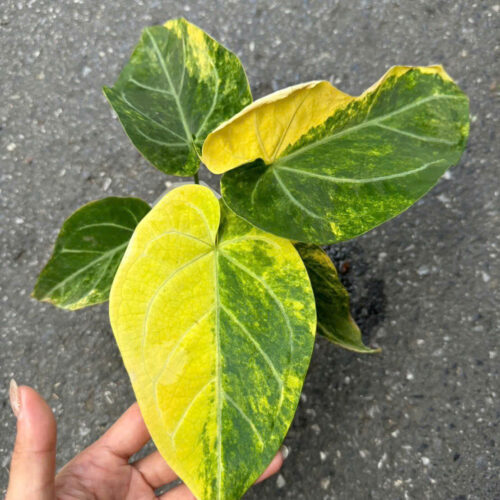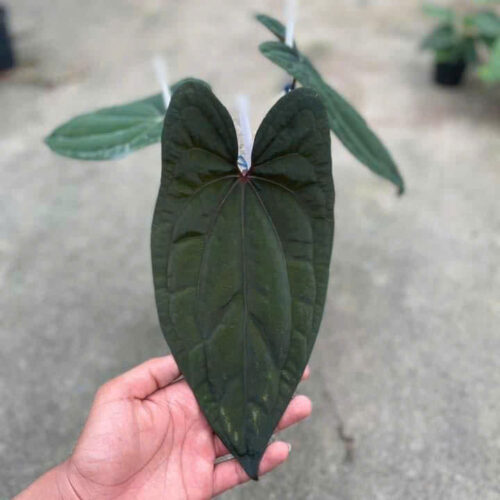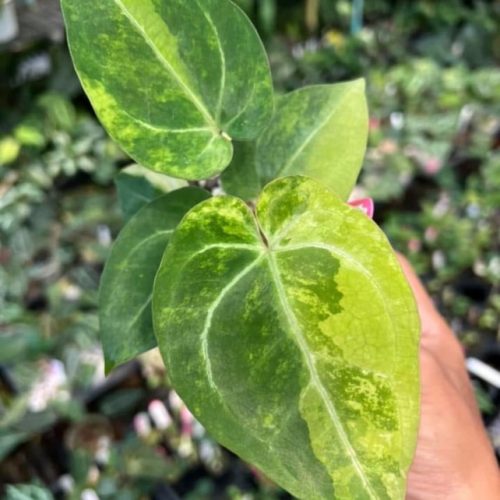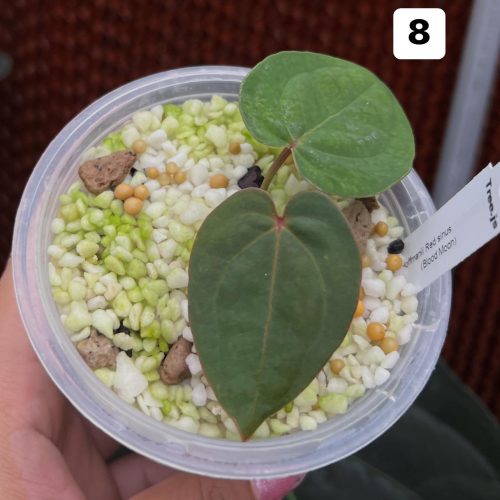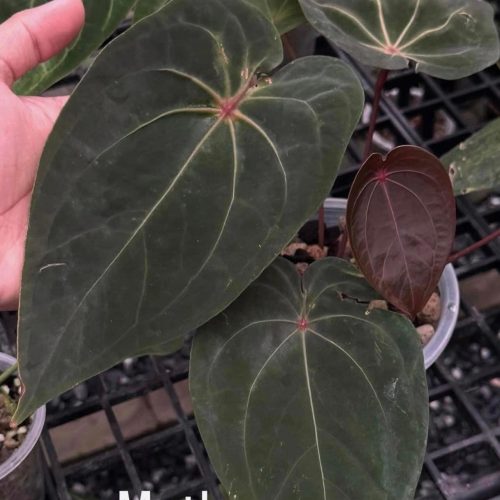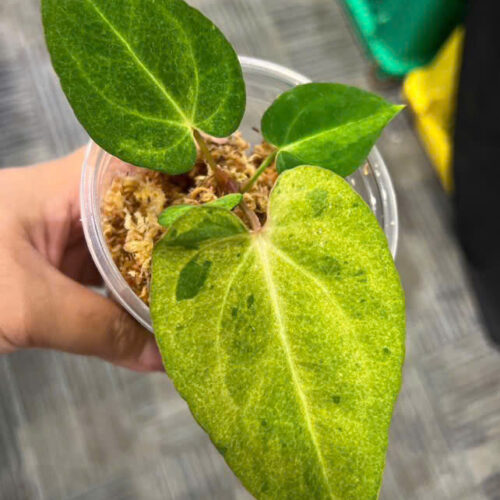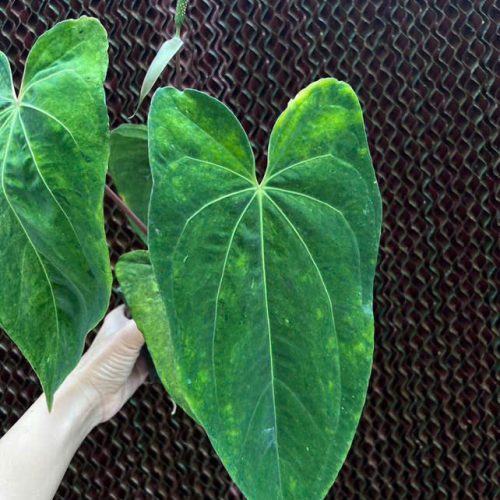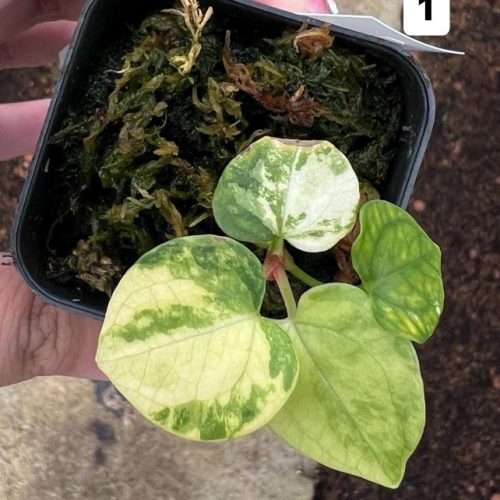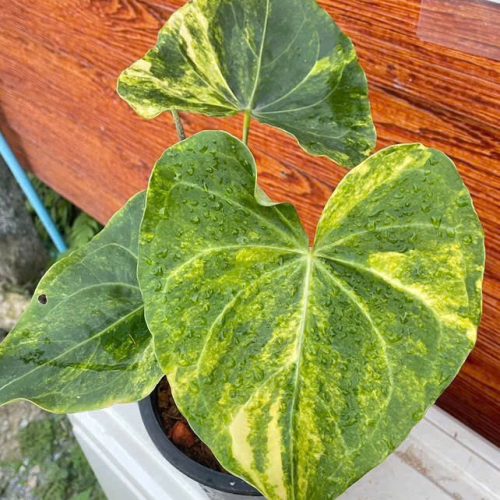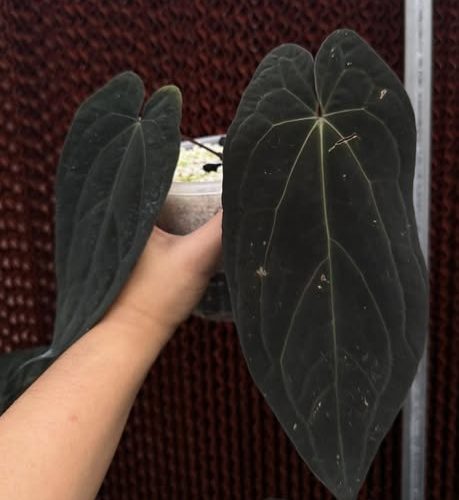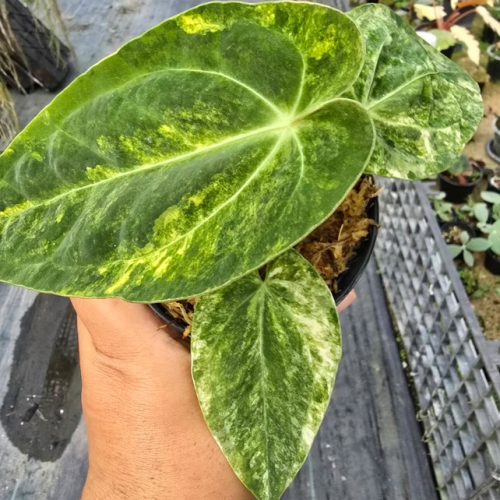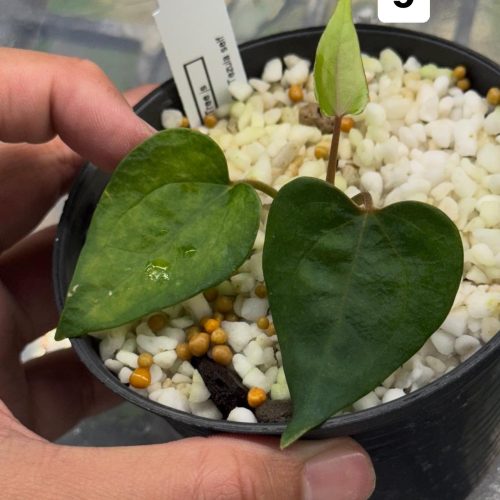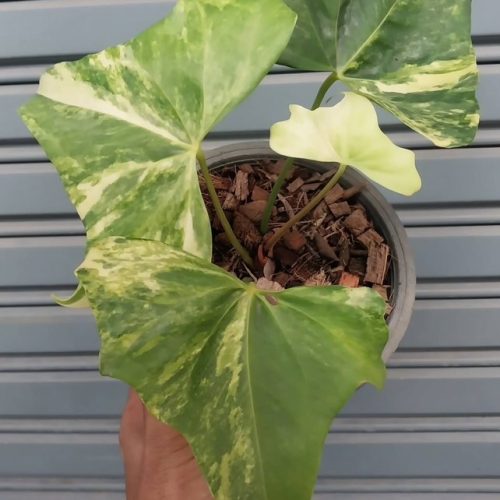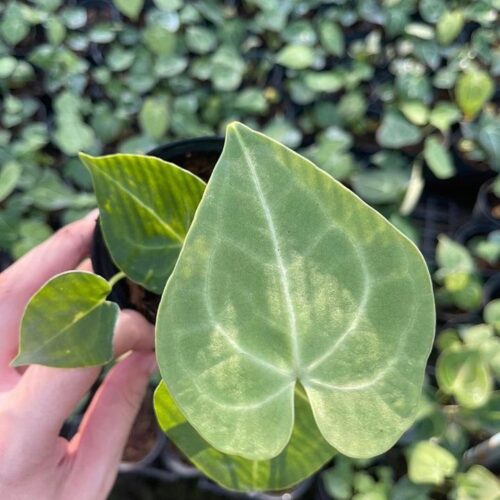Anthurium is a genus of about 1,000 species of flowering plants, the largest genus of arums. The most common anthurium seen in our homes is Anthurium andraeanum, which has a glossy red spathe and a yellow spadix.
Introduction
Anthurium belongs to the arum family (Araceae). The arum family contains over 3,700 species in 109 genera including common houseplants such as philodendrons, dieffenbachia, caladiums and pothos. Anthurium are mainly epiphytic or lithophytic plants native to tropical South and Central America. Anthurium andraeanum was discovered by Eduard August von Regel in 1876. This species is a native of Colombia.

Characteristics
Anthuriums have large, heart-shaped leaves that may be tinted purplish underneath. Their distinctive inflorescence features a colored waxy spathe in the form of a spike or tail with a spadix that houses the tiny flowers. Their bright spathes occur in red, pink, white, yellow, green or orange and appear throughout the year. Anthurium leaves are usually simple, large, attractively colored and borne on long petioles. Some species feature variegation in white or pale green.
Scientific Name
What is a Scientific Name
A scientific name is a formal binomial name that identifies a biological species. A scientific name contains two parts – a generic (or genus) name and a specific epithet or specific name. The system of using a two-part scientific name is called binomial nomenclature. This system was developed by Swedish scientist Carolus Linnaeus in the 18th century.
Why Use Scientific Names
Using scientific names offers several key benefits:
- They provide definitive identification of organisms across the globe regardless of common names used locally. Common names can vary by region, language and culture while scientific names are universal.
- They convey evolutionary relationships between organisms. Taxonomy and classification is based on phylogeny. Related species are grouped under a common genus name.
- They prevent confusion when a species has more than one common name within regions. Many plants have multiple common names depending on locality and language.
- They offer a stable way of communicating without name changes due to new discoveries. Scientific names based on older naming conventions are updated based on new knowledge of evolutionary lineages.
Anthurium Scientific Name
- Genus: Anthurium
- Species: varies eg. andraeanum, crystallinum
The genus name is always capitalized while the species epithet is not. Both names are italicized when handwritten and underlined when typed. The genus and species names together form a unique identifier for a plant or animal.
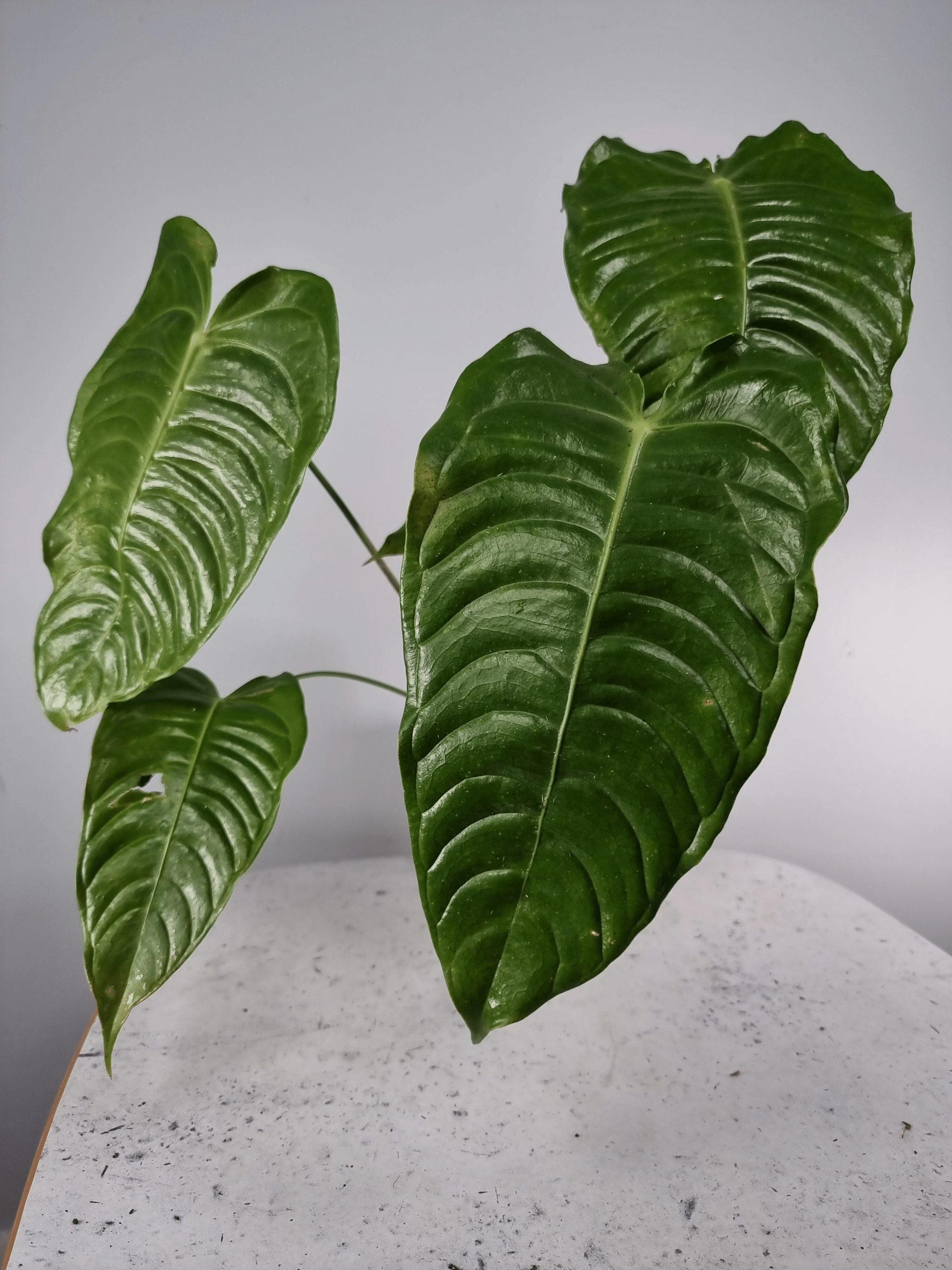
Family
The Araceae Family
Anthurium belongs to the flowering plant family Araceae. This family consists of 105 genera and over 3,750 species. The Araceae are also known as the arum family or aroids. They include many common houseplants and ornamental flowering species.
Araceae are characterized by flowers clustered on a type of inflorescence called a spadix which is usually accompanied by a leaf-like bract called a spathe. The small flowers lack petals and are densely packed on the spadix which can vary greatly in shape, size and color depending on the species.
Many members of the arum family have attractive foliage and striking spathe colors while others have inconspicuous flowers surrounded by green or brown bracts. A number of aroids grown for ornamental purposes are popular indoor and patio plants in temperate climates. Several species also hold cultural significance.
Major Genera
Some of the prominent genera of the Araceae family include:
- Anthurium: popular foliage and flowering plants including Anthurium scherzerianum.
- Philodendron: popular climbers known for attractive foliage like Philodendron hederaceum.
- Monstera: includes the iconic split leaf species Monstera deliciosa.
- Syngonium: chiefly climbing or trailing vines, popular for arrowhead shaped leaves.
- Aglaonema: hardy bushy plants with patterned foliage known as Chinese evergreens.
- Dieffenbachia: tropical foliage plants prized for bold variegated leaves.
- Spathiphyllum: commonly grown as potted flowering plants indoors and outdoors.
- Caladium: grown for their vibrantly colored ornate leaves.
- Zantedeschia: contains Calla lily species with showy white spathes.
“Explore the Exceptional 2023 Anthurium Collection: A Curated Selection of the Rarest and Most Unique Varieties Available.”
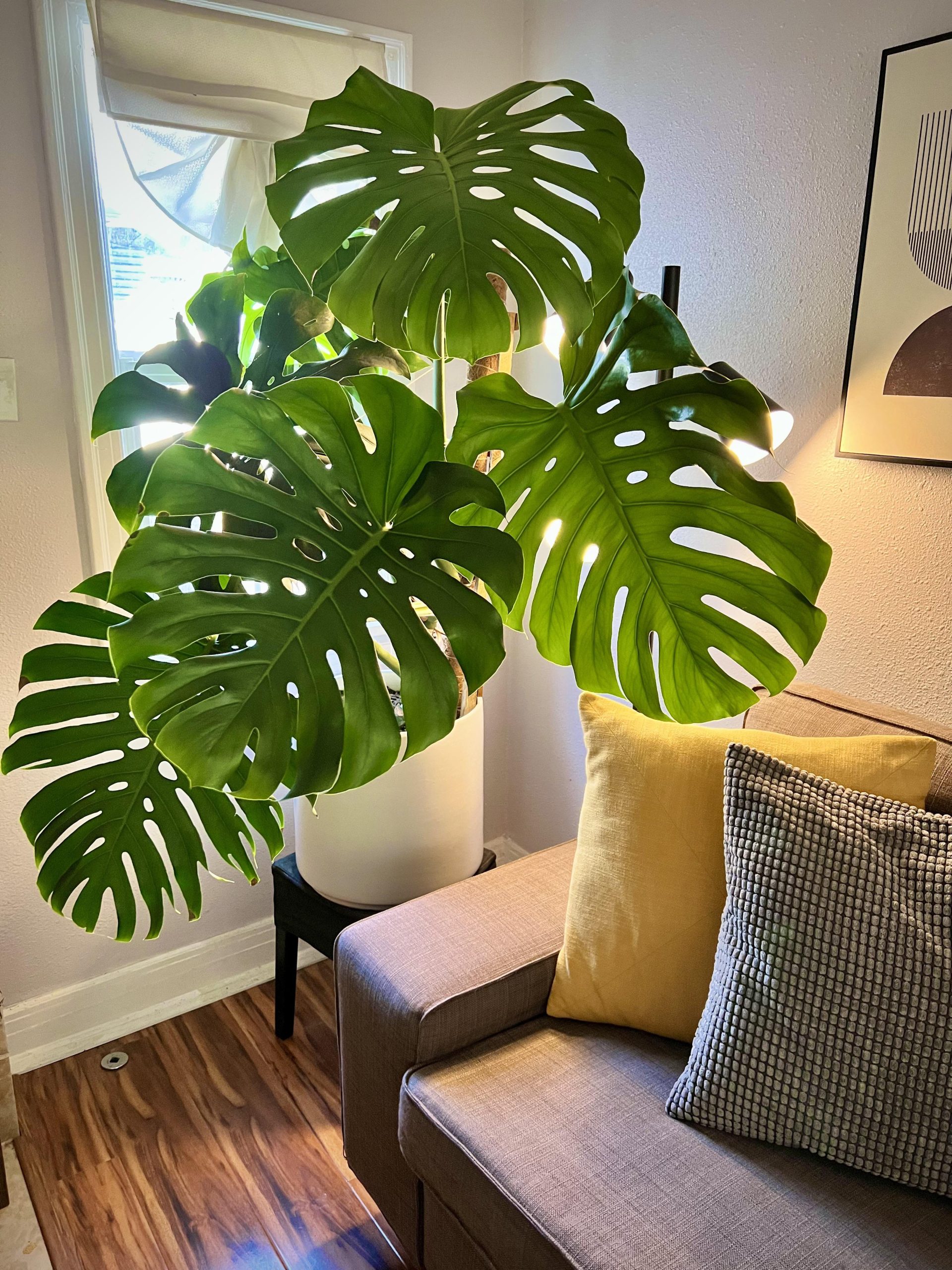
Subfamily
Aroideae Subfamily
Anthurium belongs to the subfamily Aroideae within the family Araceae. This subfamily contains around 93 genera and over 3150 species of monoecious or dioecious herbaceous plants. They are characterized by the presence of calcium oxalate crystals called raphides within the plant tissue.
Members of this subfamily have varied habits including terrestrial, epiphytic or lithophytic forms. Aroideae feature photosynthetic leaf blades along with a type of inflorescence called a synflorescence made of small unisexual flowers lacking perianth segments densely arranged on a fleshy spike.
The Aroideae subfamily consists mostly of tropical and subtropical plants native to Africa, Australasia and the Neotropics. Aroideae species are commonly grown as ornamental houseplants and foliage plants across the world.
Tribes and Genera
The Aroideae subfamily consists of around 16 tribes and over 90 recognized genera some of which include:
- Philodendron tribe (Philodendreae): Philodendron, Anthurium genera.
- Dieffenbachia tribe (Dieffenbachieae): Dieffenbachia and Syngonium genera.
- Arum tribe (Areae): Contains Arum, Biarum, and Theriophonum genera.
- Caladium tribe (Colocasieae): Caladium, Xanthosoma genera.
- Tropical epiphytic and hemi-epiphytic genera: Monstera, Epipremnum, Rhaphidophora.

Higher Classification
Taxonomic Hierarchy
The taxonomic hierarchy or classification for the genus Anthurium is:
- Domain: Eukarya
- Kingdom: Plantae
- Phylum: Tracheophyta
- Class: Liliopsida
- Order: Alismatales
- Family: Araceae
- Subfamily: Aroideae
- Genus: Anthurium
Anthurium species are classified taxonomically under the major groupings of Eukarya domain, Plantae kingdom, vascular plants (Tracheophyta) phylum, monocot (Liliopsida) class, Alismatales order and the arum (Araceae) family.
Family Classification History
Initially arum species were included under the family Acoraceae till 1836 following which the Araceae family was circumscribed by Heinrich Wilhelm Schott.
The Angiosperm Phylogeny Group system incorporated molecular phylogeny findings to outline reclassification guidelines for flowering plant families in 1998. They expanded the circumscription of the family to include duckweeds which were previously classified separately under Lemnaceae. Later DNA sequence analysis led to changes regarding removal of some genera into new families like Orontiaceae and Gymnostachydaceae.
Rank
- Kingdom: Plantae
- Subkingdom: Viridiplantae
- Infrakingdom: Streptophyta
- Superdivision: Embryophyta
- Division: Tracheophyta
- Subdivision: Spermatophytina
- Class: Liliopsida
- Subclass: Arecidae
- Superorder: Alismatanae
- Order: Alismatales
- Family: Araceae
- Subfamily: Aroideae
- Tribe: Spathicarpeae
- Subtribe: Anthurium
- Genus: Anthurium
The genus Anthurium ranks taxonomically under the Spathicarpeae tribe and Anthurium subtribe within the subfamily Aroideae and family Araceae order Alismatales, class Liliopsida (monocots).
The genus is ranked under kingdom Plantae as flowering plants or angiosperms in the division Tracheophyta subclass Spermatophytina.
Nickname
Flamingo Flower
The common name Flamingo Flower is used to refer to plants of the Anthurium genus featuring colorful spathes. It refers to species bearing bright red, pink, orange or white spathes somewhat reminiscent of flamingo plumage colors.
Popular Anthurium varieties with such vibrant spathe colors that earn them this nickname include:
- Anthurium andraeanum cultivars featuring bright red spathes.
- Anthurium scherzerianum that bears orange or red tail-shaped spathes.
- Anthurium amnicola exhibiting pale pinkchelles that fade to green.
- Anthurium antioquiense featuring glossy pink to red spathes.
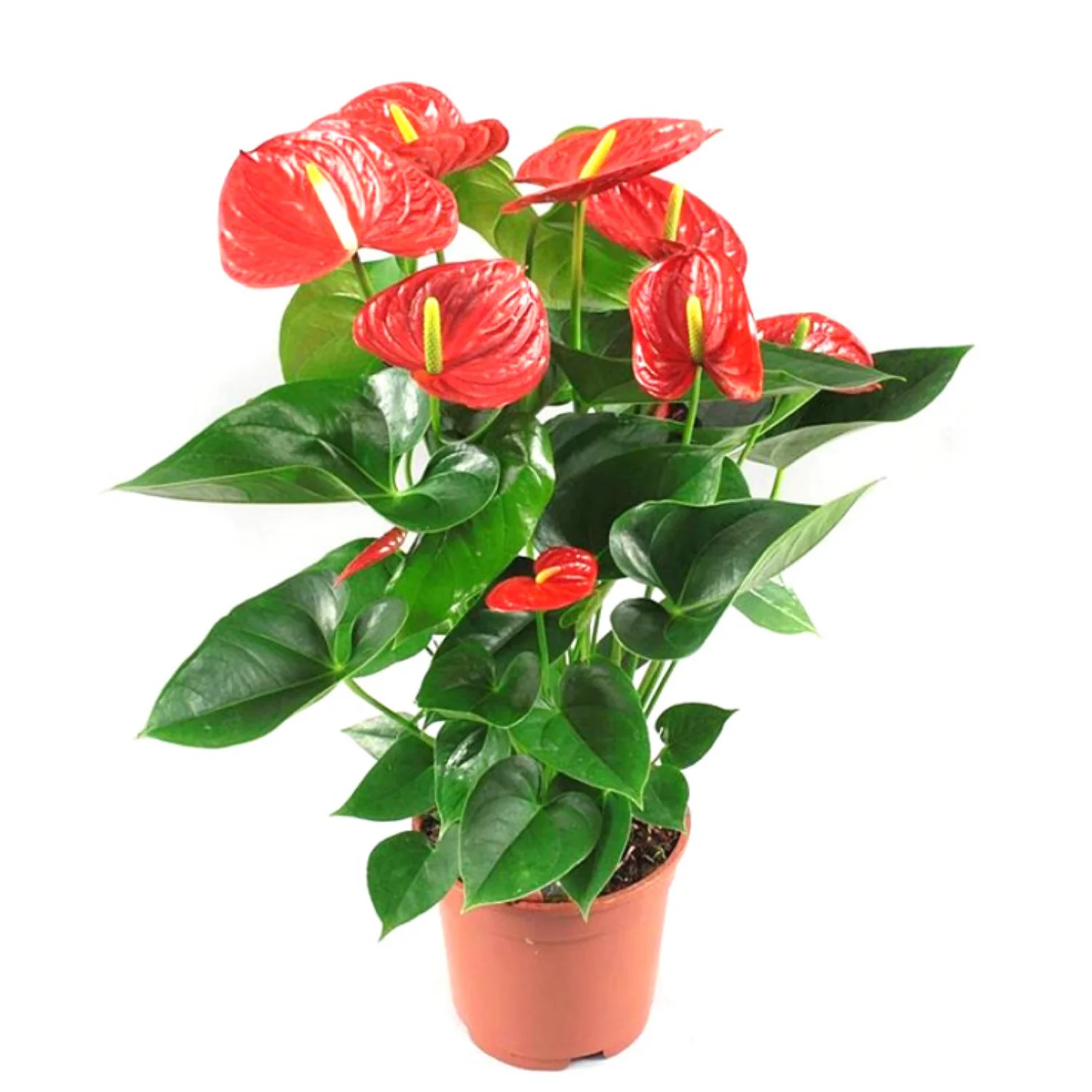
The Flamingo Flower moniker essentially groups together Anthurium cultivars and species featuring similarly showy spathes mostly in shades of red and pink with somewhat profuse blooming.
Painted Tongue
Another nickname sometimes used for Anthurium plants is Painted Tongue. This refers to the typically glossy red, pink or white spike protruding from the flowering plants resembling a tongue.
The common names Flamingo Flower and Painted Tongue both associate Anthurium plants with the conspicuously colored parts of animal bodies – a visual metaphor noting the eye-catching effect of the anthurium’s spathe and spadix display.
Life Span
Growth Rate
Most Anthurium plants grow at a slow to moderate pace as herbaceous perennials reaching mature sizes. Seedlings and younger plants exhibit more rapid leaf growth. Mature leaf growth slows to a modest rate while flowering typically occurs consistently.
Indoor potted varieties grow slower and feature smaller ultimate sizes on average compared to outdoor plants. Optimum temperatures averaging 70-90° F are ideal for healthy Anthurium growth. Temperatures dropping below 50° F can negatively impact their vigor.
With ideal care most varieties achieve their full sizes within 2 to 5 years when grown in tropical or sub-tropical environs. Potted indoor plants require 5 or more years on average to attain mature dimensions.
Typical Life Span
Grown in suitable protected habitats with optimum temperature, water, humidity, light levels as well as using proper soil mixes and fertilization – Anthurium plants can have surprisingly long life spans of a decade or longer. Certain landscape species and vigorous hybrids/cultivars have been known to thrive for 20 to 30 years.
Outdoor plants in tropical settings without temperature extremes generally live longer than houseplants. Indoor potted anthuriums average life spans of 5 years for flowering plants and 10 years for durable foliage varieties provided they receive excellent care avoiding overwatering/droughts.
Species from warmer environs are more cold sensitive while tropical montane species can better tolerate cooler house temperatures – but most fare best at consistent warm indoor temperatures between 70 to 90 degrees Fahrenheit ideally with 60-90% ambient humidity levels.
Where to buy Anthurium? Benefits from importing plants from Thailand
- Shipping: Door to door shipping, fast and safe with Dragon Courier
- Biodiversity: Thailand is known for its rich biodiversity, including a wide variety of aroid species. This diversity allows importers to access a broad range of unique and exotic aroid plants.
- Quality and Health of Plants: The suitable climate helps the plants grown here stay healthy and of high quality.
- Cost-Effectiveness: Due to favorable growing conditions and efficient production methods, Thai aroid plants can often be more cost-effective compared to those from other countries.
- Access to Hybrid Varieties: Thai growers are often involved in the development of new hybrid aroid varieties, offering unique plants that may not be available from other sources.
Anthurium species are the most sought after by aroid plant lovers
Conclusion
Anthurium is a diverse neotropical genus containing over a 1000 herbaceous species within the Araceae family known for their characteristic flowering structure featuring colorful modified leaves called spathes accompanying the spadix covered with small inconspicuous flowers.
Taxonomically classified under kingdom Plantae and Tracheophyta division, Anthurium species rank under subfamily Aroideae within the family Araceae order Alismatales known for their shared inflorescence features.
Anthurium plants grow slowly as perennials achieving decade plus long life spans across the warm environs of Central and South America they are native to as well as indoors when provided ideal humid warmth and care.
The genus contains popular ornamental foliage and flowering varieties grown for their striking leaves as well as vivid spathe displays earning them nicknames linking them to the pink plumage of flamingos or painted tongues.
See more Discover the Best Anthurium Adult Size for Your Indoor Garden


